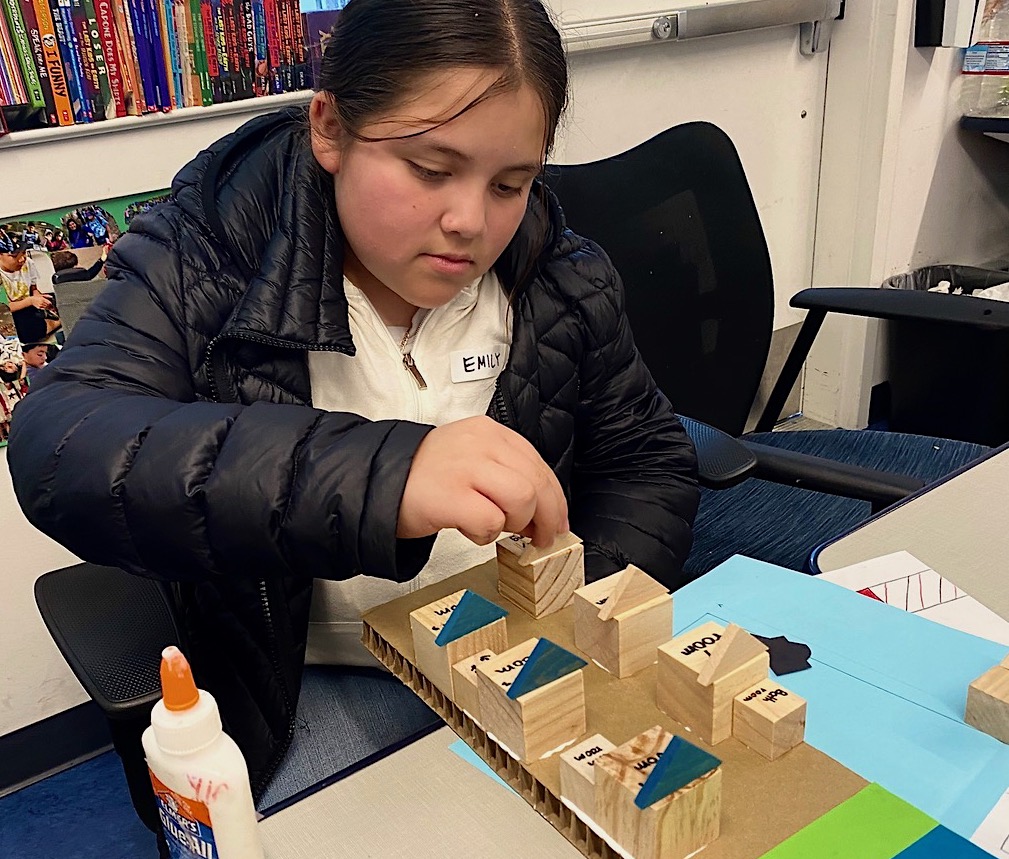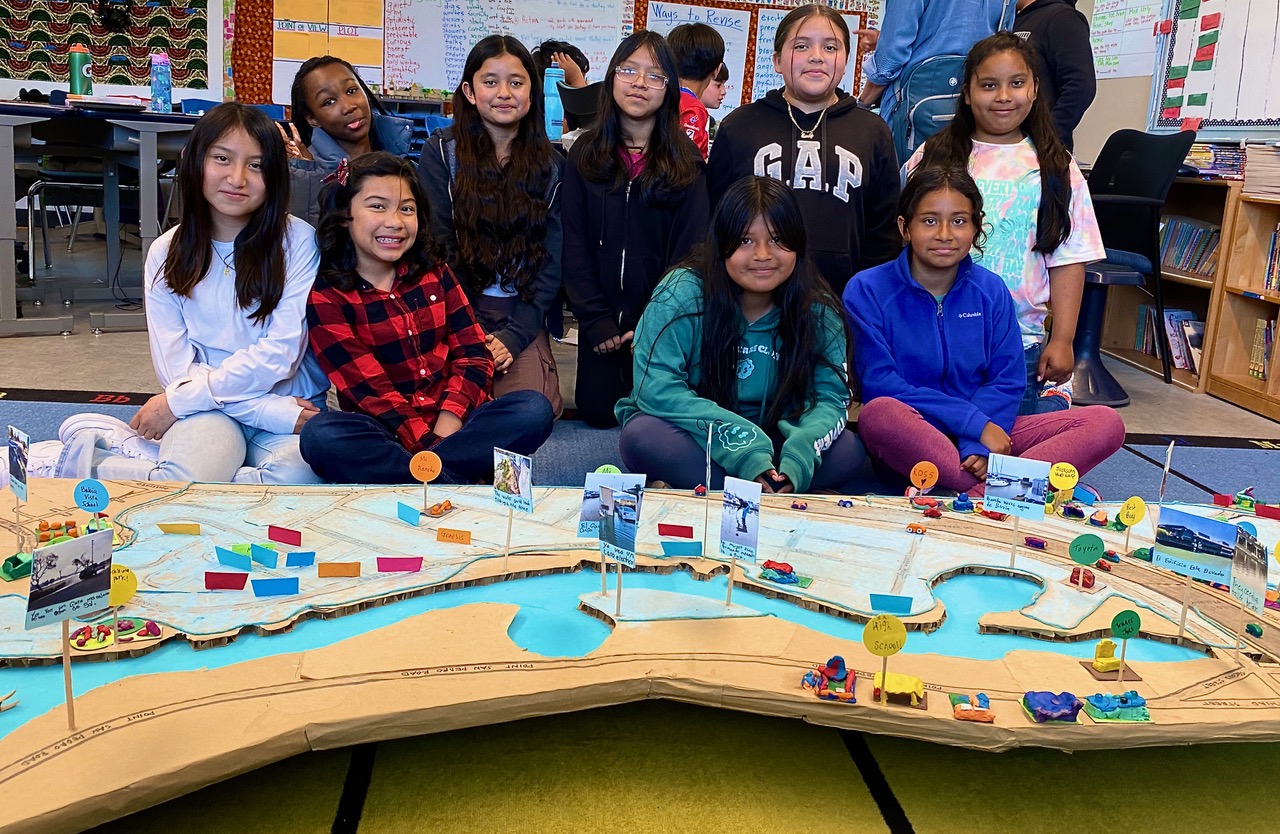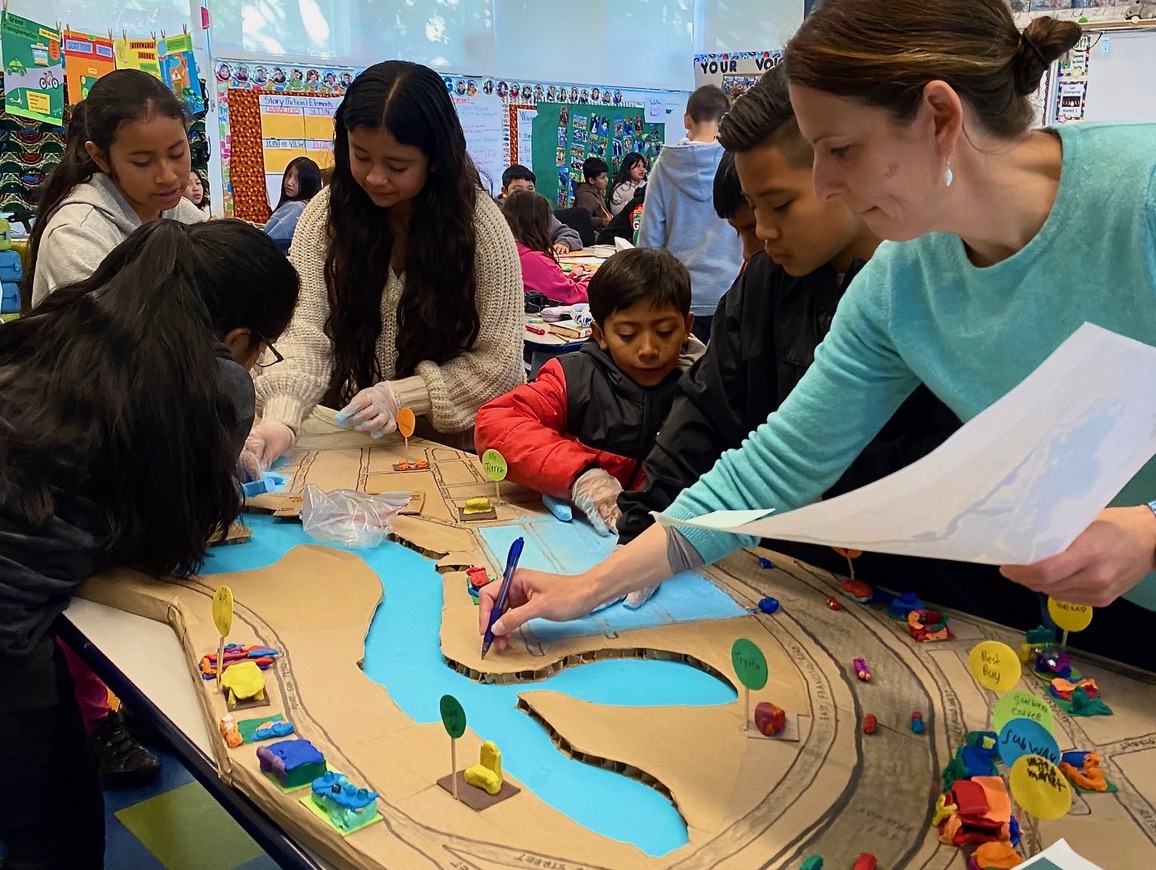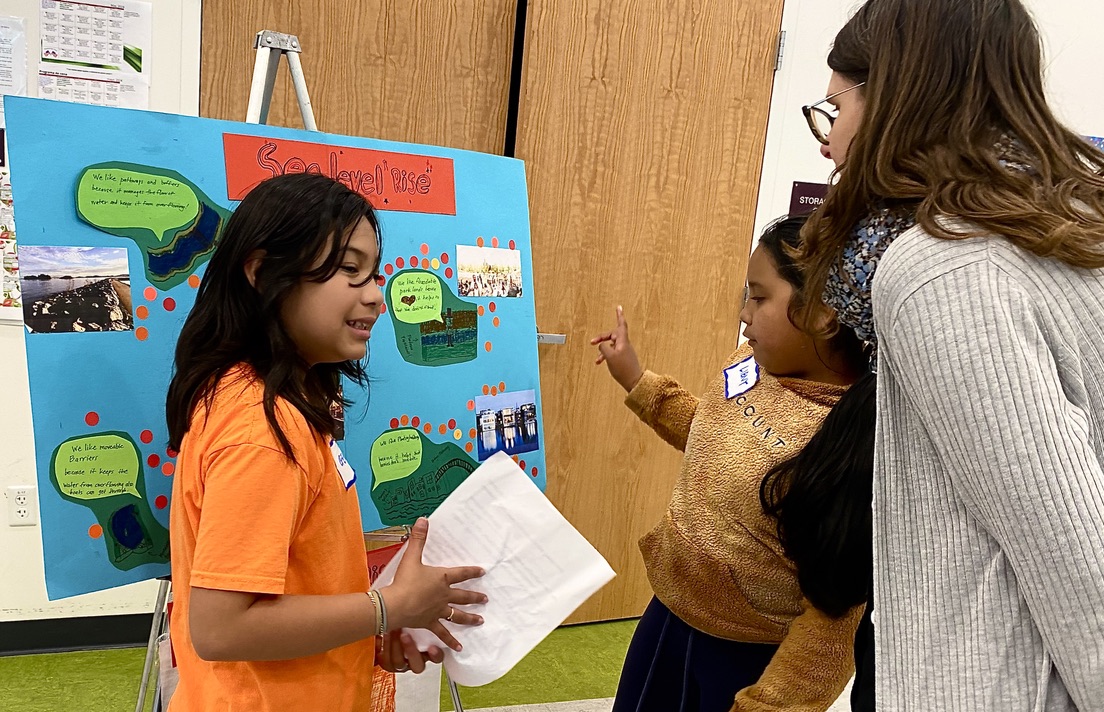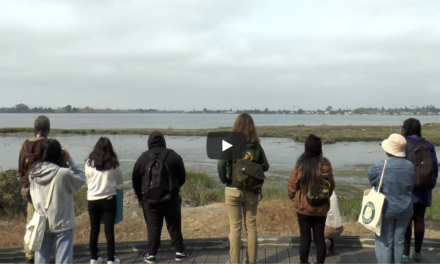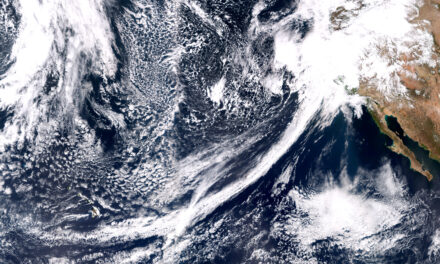San Rafael Schoolkids Grapple with Rising Canal
“A lot of students live at the edge of inundation.”
Emily DeLeon, 11, thought carefully about what she needed most in a home before spending her limited construction budget. She crouched alongside her classmates, a group of fifth graders participating in a program to involve youth in climate adaptation planning, over a handmade model of San Rafael that took up much of the classroom floor. Canals sheared from blue construction paper wended through neighborhoods of wood block houses. Hand-lettered street names marked Sharpie-shaded roads. Wind turbines rose out of front yards and rain barrels stood in lush gardens. A massive aqua oval delineated the zone at risk for flooding by 2050, and DeLeon’s home sat just outside of it.
The model presented a mix of reality and imagination. The streets, waterways, and flood zone were accurate, and the students had built their houses true to where they lived. But here, unlike in real life, they had the instant ability and budget to retrofit their homes for resilience. Wind turbines and rain barrels and gardens were just a few snips of construction paper away.
DeLeon outfitted her house with solar panels, which she envisioned as part of a self-sufficient system that could sustain power even if the grid lost it. Her inspiration came from real life: her family’s home often loses power when it’s stormy or windy, she says.
Many in DeLeon’s class at Laurel Dell Elementary already face climate impacts, with more coming. The school, along with many of the students’ homes nearby, is in a watershed deemed one of the most at risk for inundation due to sea level rise in the region, according to a 2017 report. Because San Rafael is one of the lowest lying areas in the Bay Area, it will be one of the first to feel the effects of sea level rise.
When the class mapped areas with high flood risk as part of their work with the UC Berkeley-based civic learning program Youth—Plan, Learn, Act Now, many found their homes could be endangered by future sea level rise if no action is taken. Allison Teh, 10, noticed the flood zone crept right up to her house. “That was scary,” she says.
Y-PLAN Creative Director Shirl Buss notes that while the classroom exercise is theoretical, the challenges it raises are very real. “It’s important to introduce young people to issues that are going to affect their futures,” she says. “The contours of their lives are going to be shaped by them.”
Over the course of 15 weeks this spring, Y-PLAN, in collaboration with the nonprofit Youth in Arts, introduced the students to coming risks and encouraged them to devise adaptations. The students met each week and built intricate models of their neighborhood, their homes, and an imagined community of floating dwellings that could rise with the water level. Their posters on sustainable adaptations are featured on the KneeDeep Times California Climate Quilt.
Sea level rise was a new concept for everyone in this year’s Laurel Dell Elementary class, says Buss. She believes it was new information for their parents too.
Flooding is the biggest climate risk facing San Rafael, but many residents aren’t aware of it, confirms Kate Hagemann, the city’s climate adaptation and resilience planner. Floods are currently forestalled by an aging and haphazard system of levees and pumps. Because the neighborhood around Laurel Dell Elementary doesn’t currently flood during storms, it’s not on the radar of residents.
But that line of defense is vulnerable and upgrades are tricky, says Hagemann. The aging pumps are managed by the city and can be replaced, but San Rafael has an untold number of levees and other makeshift barriers that are privately owned and often managed as part of an individual apartment complex or single-family home. That makes it hard to assess the overall resilience of the area’s infrastructure to flooding. It also makes it hard to easily make upgrades, from a city or county level.
Further, most homes in the area are not resilient to flooding, says Hagemann. The first floors of most houses aren’t built above ground level, which makes them sitting ducks waiting to flood when the water comes. Widespread subsidence, or sinking land, around San Rafael adds further vulnerability to rising tides. The necessary retrofits will be expensive.
“It cost $7 million to replace one pump in San Rafael recently. You can extrapolate from there,” says Hagemann.
It’s a problem the entire region will have to reckon with. It’s estimated to cost $110 billion to protect all Bay Area shorelines that will experience sea level rise and storm surge by 2050, according to a 2023 report from regional agencies.
Y-PLAN matches its student cohorts with a powerful client that wants their input on a real-world problem. Past clients have included the San Francisco Planning Department, BART, and Libby Schaff, the former mayor of Oakland. It’s important that the students see that people in power value their ideas, says Buss. She hopes the experience can help young people stave off cynicism. They often have reasons to be skeptical, she says, as Y-PLAN tends to work with youth of color from low-income neighborhoods, a demographic rarely seen at the urban-planning drawing board.
“I see a lot of pessimism because they’ve been told their ideas don’t matter,” says Buss. “But when there’s a real client that needs their input, that has power and takes their ideas seriously, and is also real with them—that wakes them up.”
Scientist Kristina Dahl hears what fifth graders have to say about sea level rise. Photo: Shirl Buss
The Laurel Dell Elementary fifth-grade class is about 94% Latinx and 75% Guatemalan. All but three students are bilingual and speak English as a second language. This class’ client was the nonprofit Union of Concerned Scientists, which charged the students with envisioning how to reduce the environmental impacts of climate change and sea level rise to create a more resilient San Rafael. The organization has incorporated the students’ analysis and feedback into a just-released report on coastal resilience.
Kristina Dahl, principal climate scientist for the organization’s climate and energy program, first heard about Y-PLAN when she read a 2019 op-ed in the Marin Independent Journal penned by Laurel Dell Elementary fifth-graders that cited her research. She didn’t often hear outspoken youth voices in the climate adaptation sphere, but she wanted to hear more. She and Buss resolved to collaborate in the future.
When it comes to climate change, youth are set to inherit a problem that earlier generations created. Involving young people in decision-making around how to adapt to a changing climate is one step toward accounting for that unfairness. Moreover, their perspectives are useful. Compared to adults who drive cars, youth have much more direct contact with the built environment from walking, biking, skateboarding, and taking public transit. They are also unafraid to propose bold ideas, which is needed, according to Dahl. “We’re never going to get to climate resilience with piecemeal solutions. We need space to dream,” she says.
Working with youth changed Dahl’s research approach and understanding of community institutions. When she asked the students what places should be prioritized for protection in a disaster, she expected them to cite their homes and their school. She was surprised when they instead chose Target. It was where they bought groceries, clothes, and essential supplies. The exchange emphasized that the institutions communities revolve around are often community-specific. “It got me to rethink what’s important in a community, what’s a natural resource hub and a natural place to gather,” Dahl says.
The students also helped San Rafael planner Hagemann reassess how to communicate the science of climate impacts. “Working with the students really challenged me to clarify and simplify sea level rise risk concepts,” Hagemann says. She intends to use those distilled explanations as the city talks to more residents about resilience planning.
Dahl hopes that what the students have learned about the risks facing the area and possible solutions will percolate through their families and out into the broader community.
Eleven-year-old DeLeon intends to keep trying to bolster the resilience of her home and her community, perhaps as a career path. She’s interested in someday becoming an architect. “Because I think I could help San Rafael,” she says.






